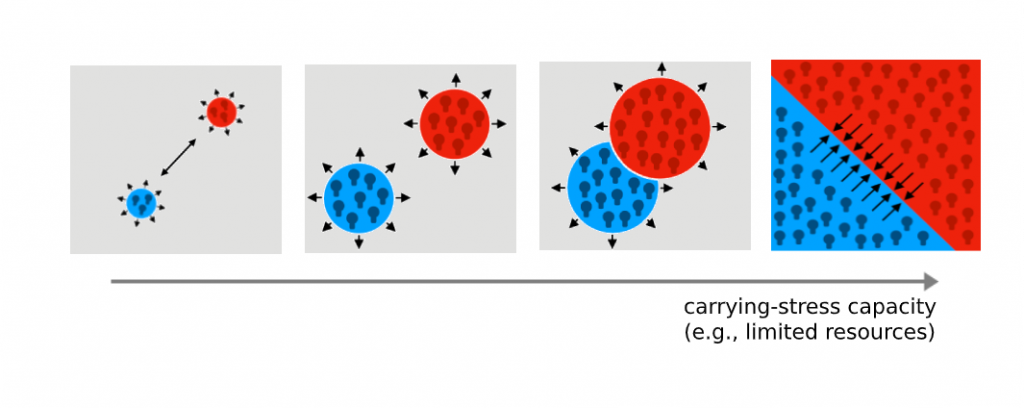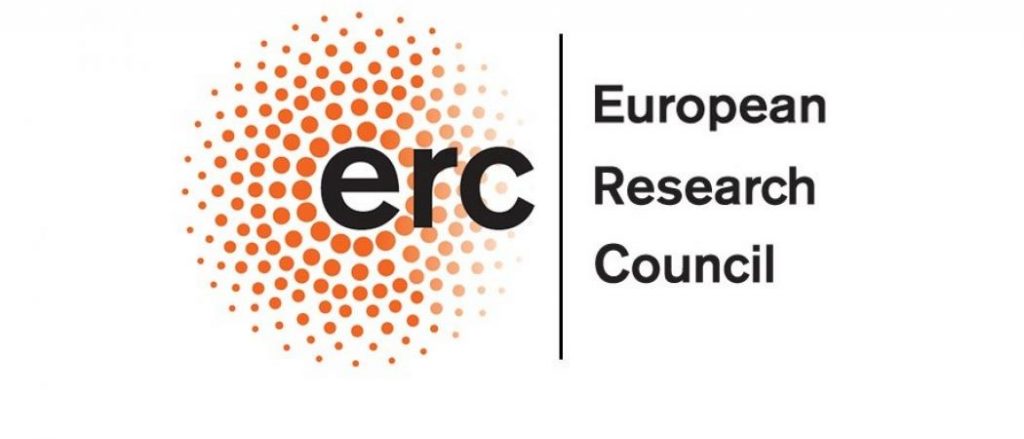Throughout the history, what has been causing tremendous suffering is groups of people fighting each other. While behavioral science research has advanced our understanding of such intergroup conflict, it has exclusively focused on micro-level processes with and between groups at conflict. Disciplines that employ a more historical perspective like climate studies or political geography report that macro-level pressures due to changes in climate and economic scarcity can go along with social unrest and wars. How do these macro-level pressures relate to micro-level processes? Do they both occur independently, or do macro-level pressures trigger micro-level processes that cause intergroup conflict? And if so, which micro-level processes are triggered, and how?
With unavoidable signs of climate change and increasing resource scarcities, answers to these questions are urgently needed. This project proposes carrying-capacity stress (CCS) as the missing link between macro-level pressures and micro-level processes. A group experiences CCS when its resources do not suffice to maintain its functionality. CCS is a function of macro-level pressures and creates intergroup conflict because it impacts micro-level motivation to contribute to one’s group’s fighting capacity and outgroup aggression.

The project centers around the following three research questions:
How macro-level pressure influences conflict within and between groups?
This research problem centers around the hypothesis that carrying-capacity triggers out-group aggression and therefore links to increased levels of intergroup conflict.
This will be tested through:
- A systematic and quantitative review (met-analysis) on the existing research involving macro-level pressures and intergroup conflict between and within societies.
- An estimation of a directionality between carrying capacity stress and (aggressor-defender) conflicts between societies. This can be achieved with time-series analysis. Carrying-stress capacity will be computed from: a) regional population dynamics, including mortality rates and deaths from pandemics, b) economic indicators such as food prices, consumer price indices, and GNP, and c) climate-related indicators such as surface temperature, precipitation, and droughts.
Does carrying-stress capacity promote aggression between groups?
This research objective focuses on the understanding whether carrying-stress capacity shaped conflict between groups.
We will focus on the following predictions:
- Outside pressure increases within-group cooperation
- Outside pressure may provide justification for out-group aggression
- Outside pressures can create an emergent need to coordinate out-group aggression through enhanced communication (the ability to exchange information prior to decision making) and leadership (the delegated power to make decisions on behalf of others).
These predictions will be tested means of laboratory experiments using Intergroup Aggressor-Defender Contests.
How carrying-stress capacity shapes the biobehavioral underpinnings of between-groups conflicts?
In inter-group conflict, is predicted to be associated with in-group oriented cooperation that co-occurs with out-group oriented aggression. Such behavioral effects should be accompanied by parallel effects of outside pressure on individual-level neurophysiology. Here, we center on the hypothesis that out-group aggression and in-group defense are associated with a specific pattern of neuro-, physio- and hormonal responses, typical for threat responding.
These will be investigated by means of “one-shot” Intergroup Prisoner’s Dilemma tasks in which behavioral and neurophysiological responses will be measured at an individual level.
This page features an overview of publications.
- De Dreu C.K.W. & Gross J. (2019), Asymmetric conflict: Structures, strategies, and settlement., Behavioral and Brain Sciences 42: e145.
- Gross J. & De Dreu C.K.W. (2019), Individual solutions to shared problems create a modern tragedy of the commons, Science Advances 5(4): e7296.
- Gross J.A.J. & De Dreu C.K.W. (2019), The rise and fall of cooperation through reputation and group polarization, Nature Communications 10: e776.
- De Dreu C.K.W. & Gross J. (2019), Revisiting the form and function of conflict: Neurobiological, psychological, and cultural mechanisms for attack and defense within and between groups, Behavioral and Brain Sciences 42: e116.

This project has received funding from the European Research Council (ERC) Advanced Grant (Grant agreement no: 785635). Learn more about the mission of the European Research Council here.